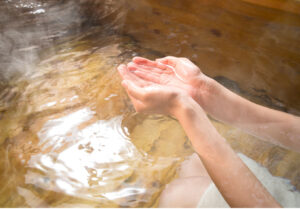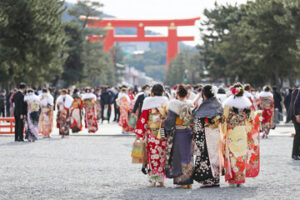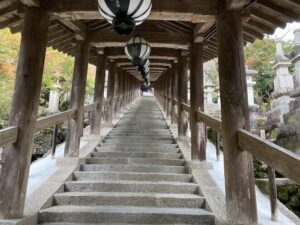March 3 is Peach Festival, the day of the Hina Matsuri (Girls’ Day).
What is Hinamatsuri for and what is it all about?
What is the Hina Matsuri (Japanese Doll’s Festival)?
Hinamatsuri is an event to wish for the healthy growth and happiness of girls.
Today, we celebrate the growth of daughters (girls), but originally, families wished for their children (both boys and girls) to grow up healthy and happy, so that they would not have any bad luck.
When is the Hina Matsuri (Japanese Doll’s Festival)
Hina Matsuri is on March 3. It is one of the Five Seasonal Festivals.
The five seasonal festivals are January 7, March 3, May 5, July 7, and September 9. It is meant to mark the turning of the seasons. On these days, people prayed for a good harvest, good health, and prosperity of descendants, made offerings to the deities, and held events to ward off evil spirits.
What do we celebrate on Hina Matsuri?
Hina dolls and peach blossoms are displayed to celebrate the growth of daughters (girls) with family and close friends, and to wish for their happiness. There are no specific rules for the festive meal, but Chirashi Sushi and Hamaguri clam soup are often eaten. There are also sweets such as Hishi-mochi and Hina-arare (Hina sweets), which can be seen only at this time of the year.
The day to celebrate the growth of sons (boys) is on May 5th.

What are hina dolls?
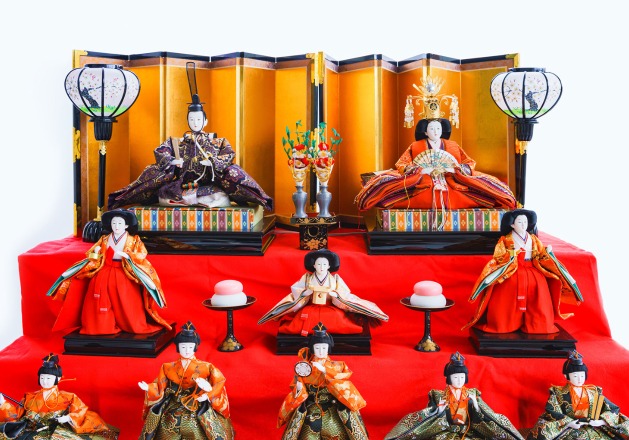
Traditionally, when a girl is born, a special doll called a hina doll is prepared by around February for the first time.
Hina dolls are displayed only from early February to mid-March each year to wish for the healthy growth and happiness of the girl (daughter).
Reasons for decorating Hina Dolls
Hina dolls represent the marriage of the Emperor and Empress, and wishes are made that the daughter will have a happy marriage in the future.
Hina dolls also have the meaning of asking the dolls to take on the bad luck of the daughter. The origin of hina dolls is that people’s impurities were transferred to paper dolls and floated down the river. Although the form and events have changed with the changing times, the wish for the health and happiness of the daughters remains the same by displaying Hina Dolls.
Over time, hina dolls have changed in size and shape. After World War II, the most common way to display hina dolls was to have 15 dolls on 7 tiers. Recently, due to changes in housing conditions and social life, smaller ones such as 1-tier (only male and female dolls) or 2-tier (male dolls, female dolls, and 3 female dolls) are popular.
Hina dolls displayed on 7 tiers
◉ First tier: a pair of male and female dolls
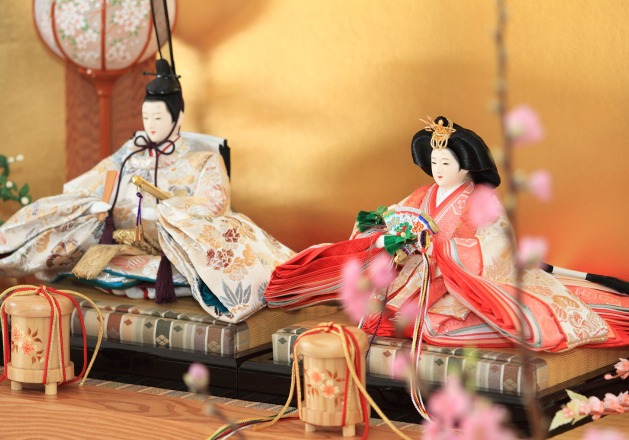
The male doll is called “obina” and symbolizes the Emperor, and the female doll is called “mebina” and symbolizes the Empress.
◉ Second tier: A set of three female dolls
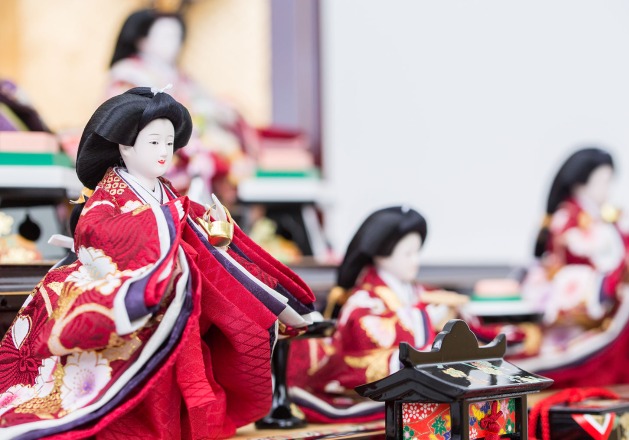
Represents female courtesans available to the court who take care of the empress and princesses’ daily lives and educate them in etiquette, etc.
◉ Third step: Five pairs of boy dolls
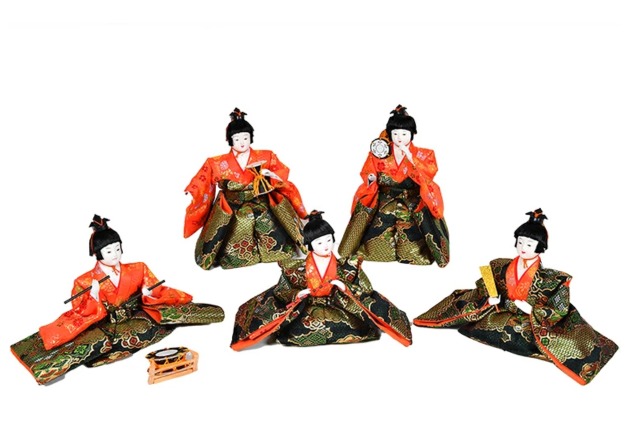
The five perform a performance (instrument or song) to complement the wedding ceremony.
◉ Fourth step: One escort on each side
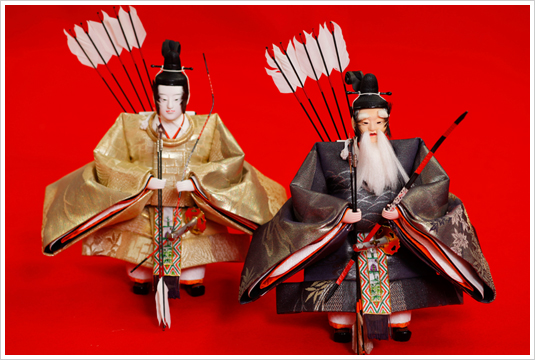
Protects the emperor and empress.
◉ Fifth step: Common people who do chores for the court.
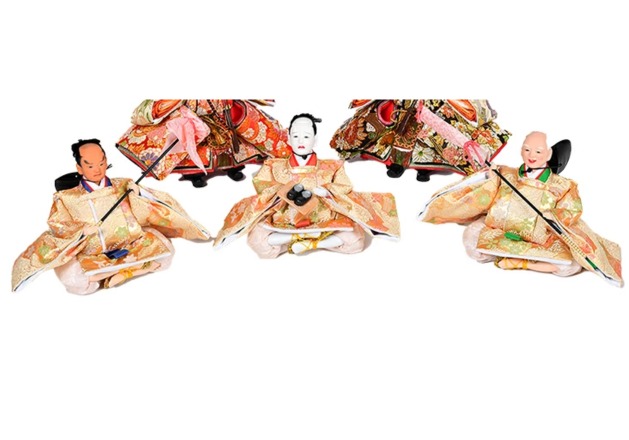
They carry tools for cleaning and going out.
These three have expressions of laughter, crying, and anger, with the hope that the daughter (girl) will grow up to be expressive.
◉ 6th step: set of tools for a bride-to-be
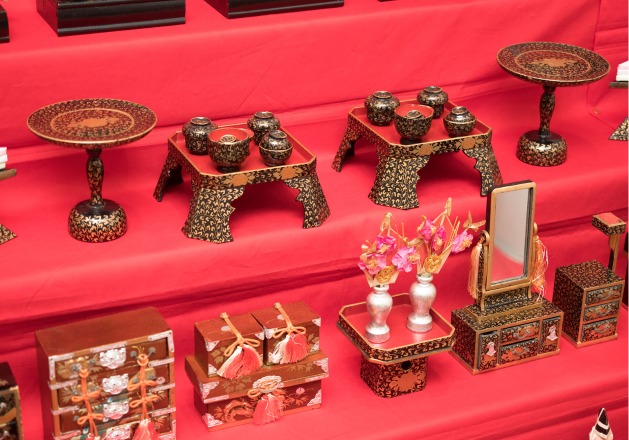
A woman brought her own utensils for living, such as a chest of drawers, tableware, and cosmetics, when she married. The money for the tools was provided by the man’s side.
◉ Seventh step: Vehicles of nobility
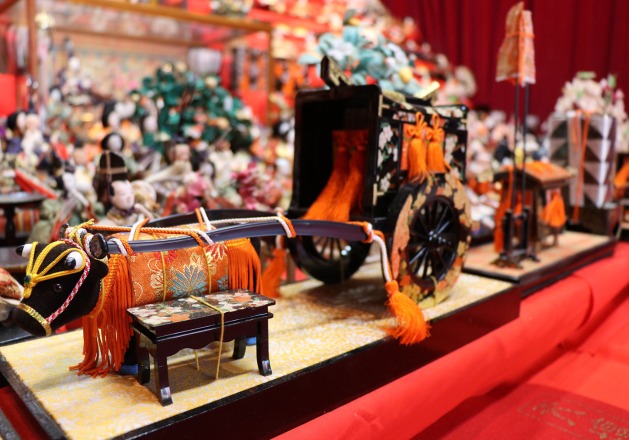
■ Hi-Mousen (scarlet carpet)
The red cloth placed under the dolls was also used at weddings. The red color has the meaning of repelling evil, and it is also used to express a wish for the health of the daughter.
■ Cherry and Tachibana trees
Cherry blossoms are believed to ward off evil spirits, while Tachi bana(mandarin orange) were praised as trees of longevity because they bloom in winter.Both trees are believed to be used to wish for the healthy growth of daughters.
■ Hishi Mochi
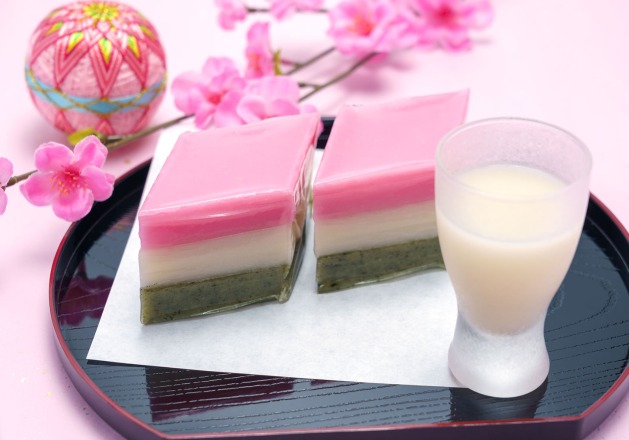
Hishimochi is a Japanese confectionery made of red, white, and green rice cakes.
Red represents protection from evil, green represents health, and white represents purity. In other words, Hishimochi is made with the wish that the daughter will grow up “healthy” and “pure” and “ward off evil.
What is the origin of Hinamatsuri?
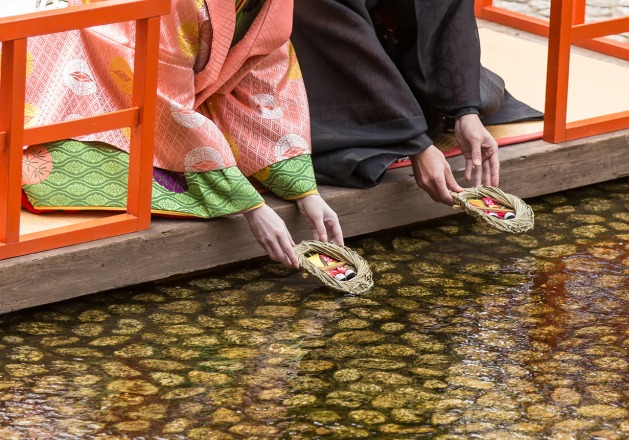
In Japan, people used to rub a doll made of paper, straw, wood, or stone against their bodies to transfer impurities to the doll and throw it into a river or the sea to get rid of bad luck.
This custom is said to have been combined with Chinese culture and became a courtly event in March.
During the Heian period (794-1185), “Hiina-asobi,” or playing with paper dolls, became popular among children of the aristocratic class. ‘Hiina’ means small. Later, Hiina-asobi (playing with small dolls) was combined with the event of flushing dolls to drive away bad luck, and people began to display dolls that could take on bad luck in place of people.
Nagashi Hina
Nagashi Hina are dolls used in the Hina-nagashi ceremony, in which the impurity of the humans is transferred to the dolls, and the dolls are washed down into the water to purify them. Hina-nagashi is a traditional event that is considered one of the origins of Hinamatsuri. In some areas, it has continued to the present day.
Why is it also called ‘Momo-no Sekku’ (Peach Festival)?
The reason why it is called ‘Momo-no-Sekku’ (Peach Festival) comes from the fact that peach blossoms bloom around March of the lunar calendar, and that peaches were believed to be effective in warding off evil and praying for longevity. The peach tree was also valued as a tree of fertility because it bears many bodies on one tree.
When to display Hina dolls?
Generally, hina dolls are displayed from early February to mid-March.
In some areas, they are put away as soon as March 3rd is over, but in others, they are displayed until April. If they are not put away immediately, the male and female dolls are sometimes turned backward. Turning them backwards means that they have returned home or are asleep. It was considered sloppy not to put them away.
Can’t you get married if you don’t put away your dolls early?

It has long been said that if you don’t put away your hina dolls early, you will get married late.
This would be considered sexual harassment today, but until just a few decades ago, it was a common saying at home.
◉ To drive away evil spirits.
It was believed that it was better to put away the dolls that transferred bad luck quickly, instead of displaying them close by for a long time.
◉ For home education.
Hina dolls are very detailed and take a lot of time and effort to display and put away. It has been taught at home that a woman who cannot put them away properly will not make a good bride.
Hina Matsuri Information
From mid-February to early March, events related to the Hina Matsuri are held throughout Japan. Some of them use the stairs of shrines, while others display thousands of hina dolls in event halls and commercial facilities. The sheer volume of hina dolls may be a little scary, but if you have a chance, take a look.


